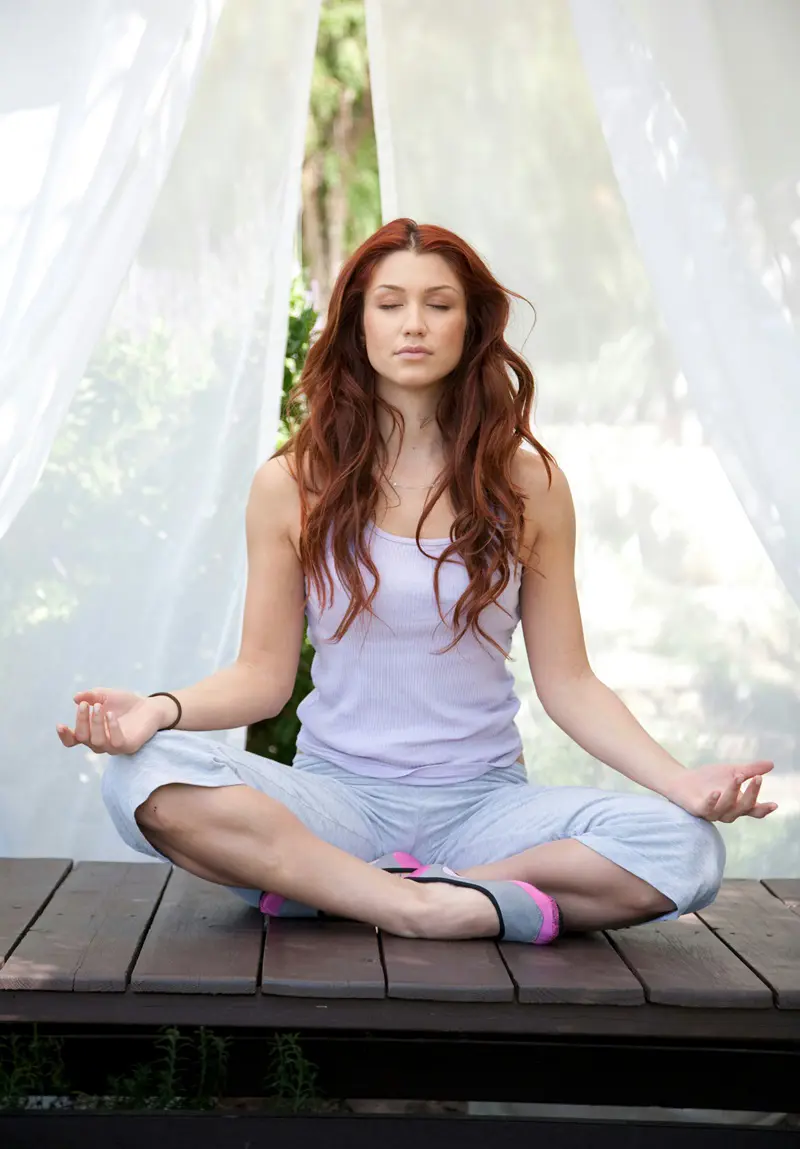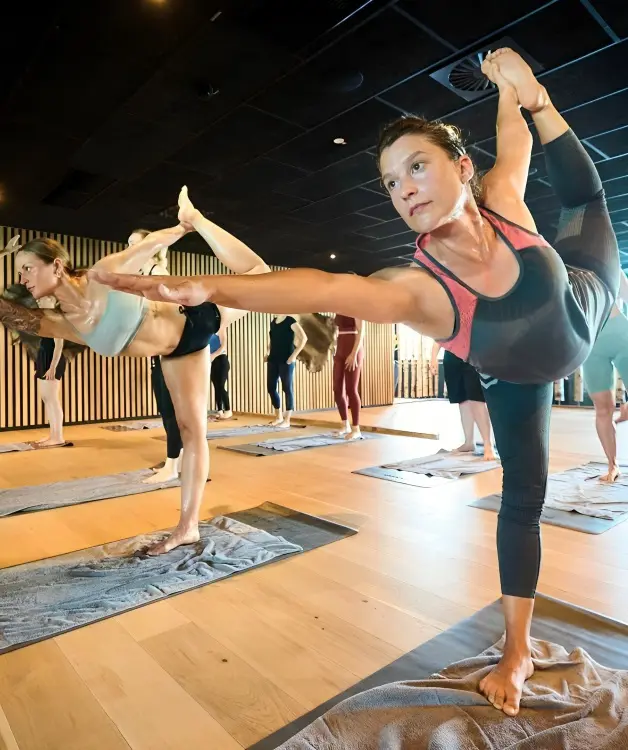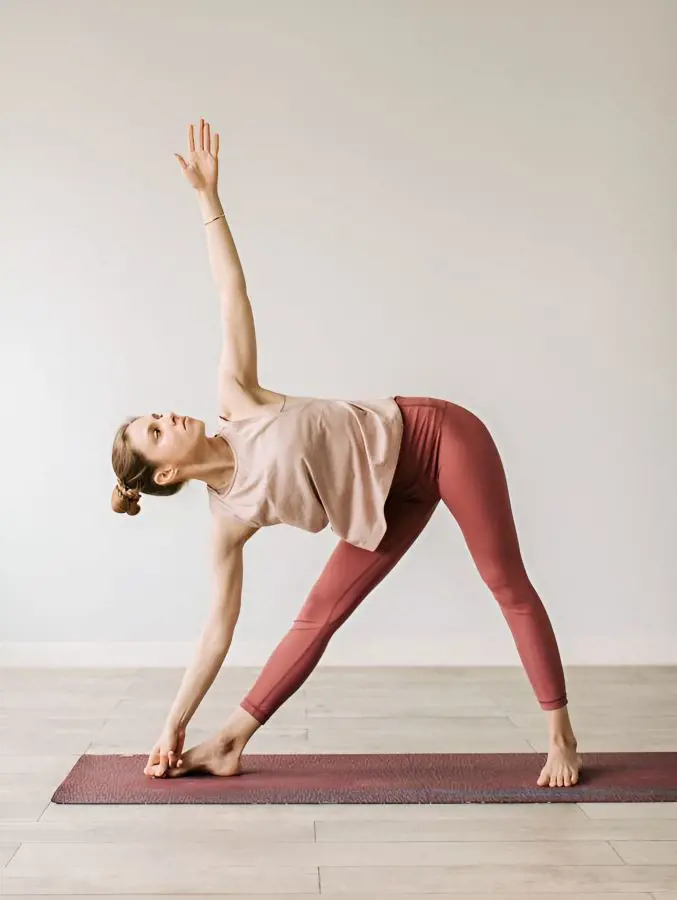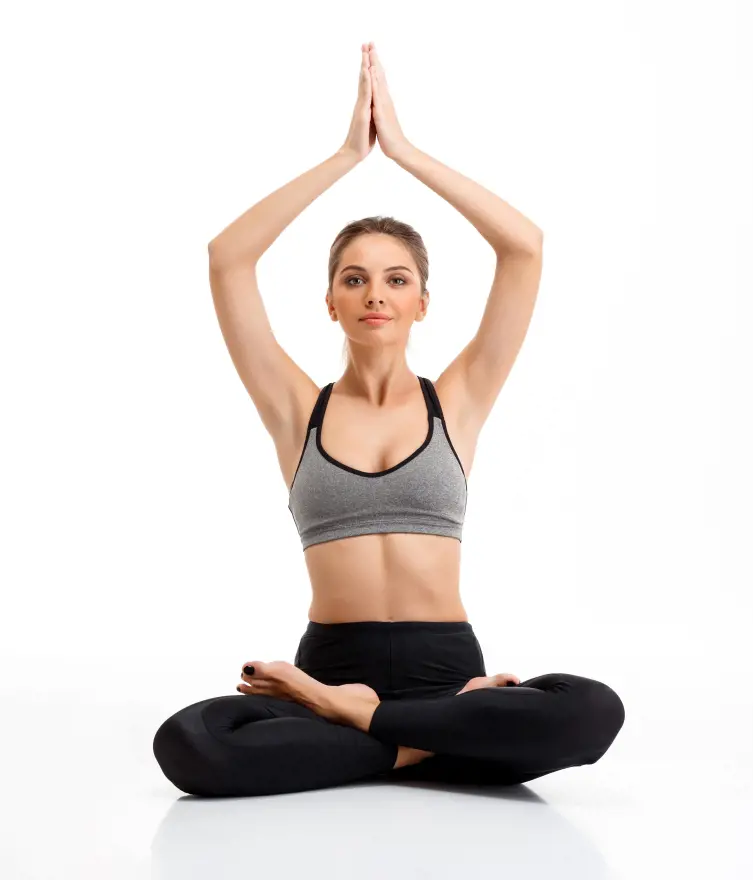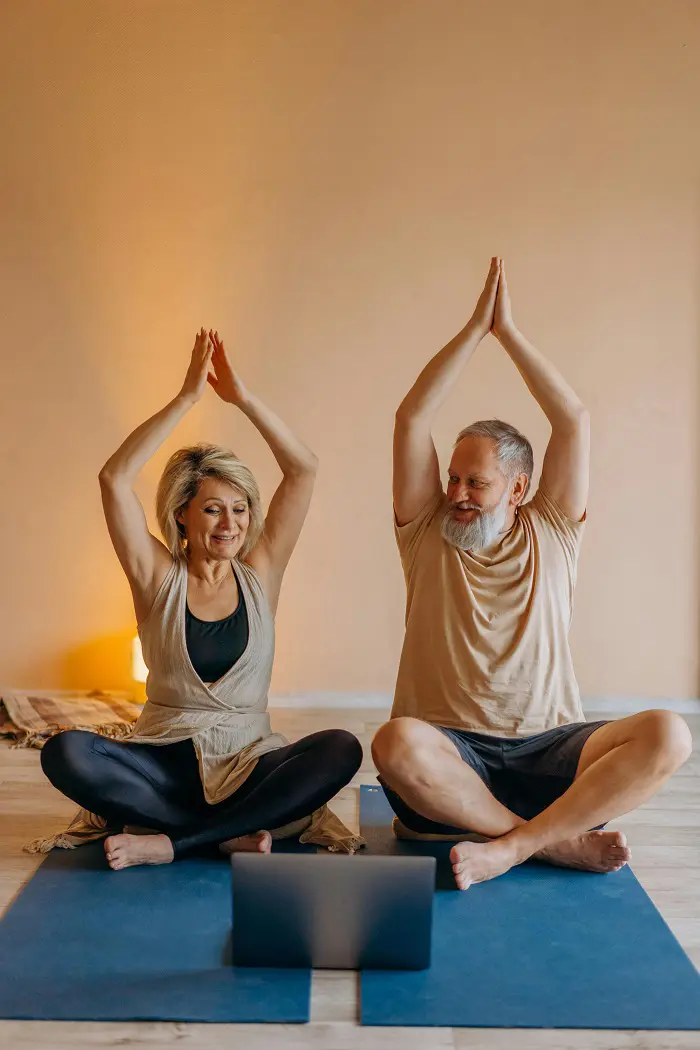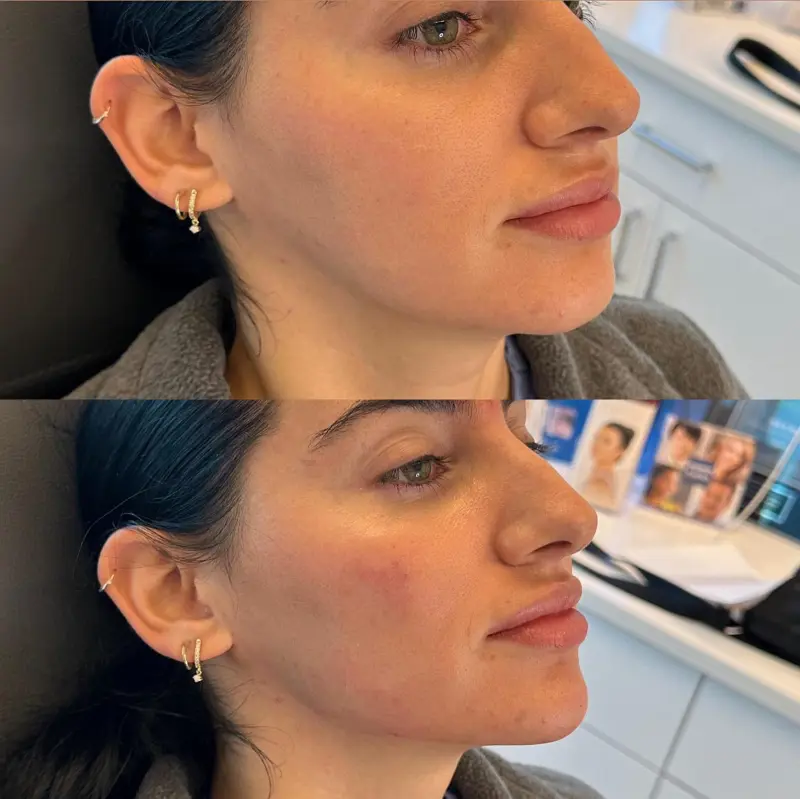15 Yoga For Beginners To Mindful Well Being
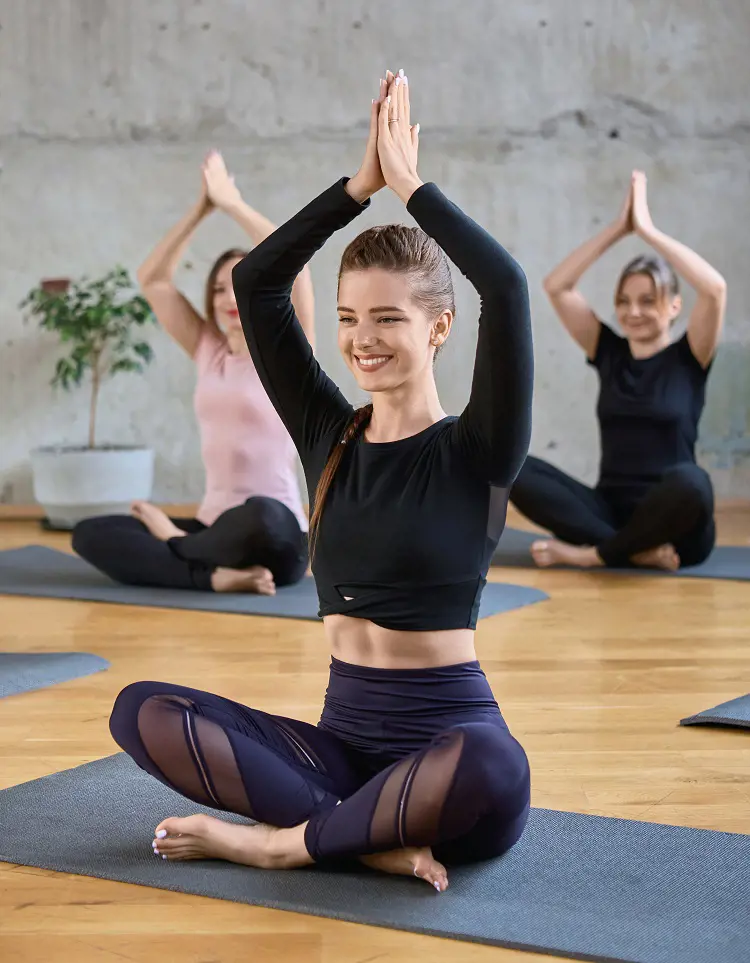
Yoga isn't just about doing cool poses that you see on TV or in advertisements. It's way more! Besides the physical exercises (called asanas), yoga includes self-disciplinary practices, such as meditation, chanting, mantra, breath work, prayer, ritual, and even selfless action.
Doing the physical poses is super good for our bodies and minds. And guess what? If you're sick, getting better from surgery, or have a long-term health issue, doing yoga can be part of your treatment and might help you get better faster. Now, let's check out 15 simple yoga poses for beginners that make us feel awesome in body and mind.
1. Mountain Pose (Tadasana)
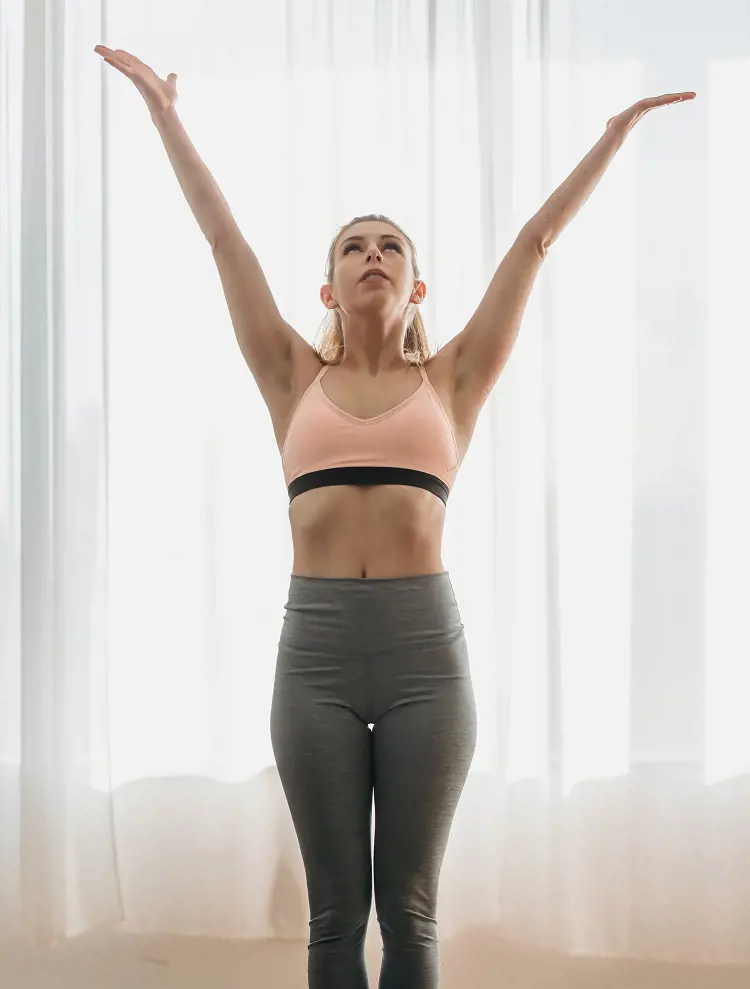
Mountain Pose is a foundational yoga pose that belongs to the category of standing or balancing poses. It is often considered a basic standing posture and is commonly used as a starting or transition pose. Tadasana is often incorporated into both beginner and advanced yoga practices as a way to establish a strong and steady foundation before moving into other poses.
How To Do
Stand with feet together, arms by your sides. Distribute weight evenly on both feet, engage thighs, and lift the chest. Lengthen the spine, relax your shoulders, and reach your arms down. Breathe deeply, grounding through your feet. Tadasana promotes stability, balance, and mindful awareness.
2. Downward-Facing Dog (Adho Mukha Svanasana)
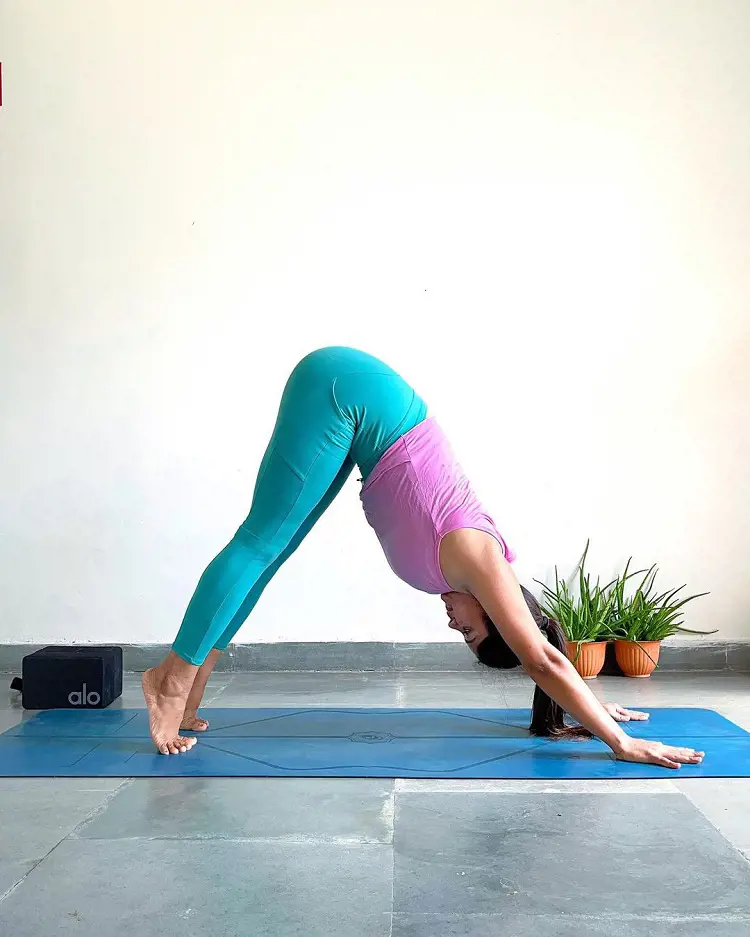
Similar to the mountain pose, this is also a foundational yoga pose found in various yoga styles, notably Hatha, Vinyasa, and Ashtanga. Downward Dog is often used as a transitional pose, linking sequences and fostering a balance between grounding and energizing qualities, making it a versatile and integral part of many yoga practices.
How To Do
Start on hands and knees. Lift your hips towards the ceiling, forming an inverted V shape. Press palms into the mat, keep knees slightly bent, and heels down. Relax the head between arms. This pose strengthens, stretches, and energizes the entire body while promoting flexibility.
3. Child's Pose (Balasana)
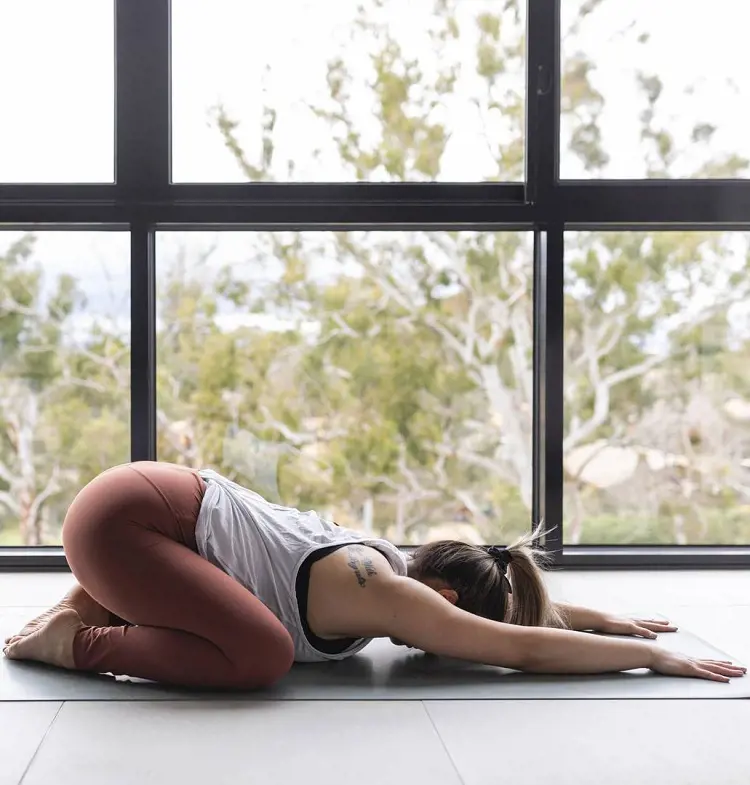
Child's Pose is a restorative and grounding yoga pose commonly associated with Hatha and Vinyasa yoga. It involves kneeling, sitting back on the heels, and reaching the arms forward, promoting relaxation and introspection. Child's Pose is often used for rest and restoration between more active yoga sequences.
How To Do
Start on hands and knees. Sit back on your heels, extend your arms forward, and lower your forehead to the mat. Relax and breathe deeply. This resting pose stretches the back, hips, and thighs, promoting relaxation and a sense of calm. It's a restorative posture often used in yoga sequences.
4. Chair Pose (Utkatasana)
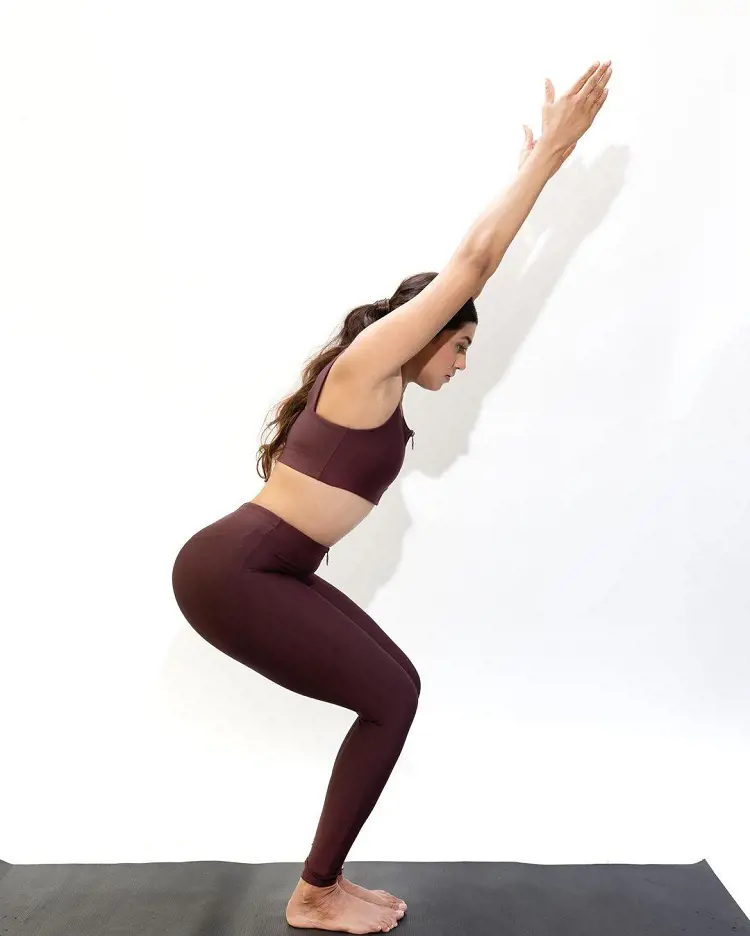
Chair Pose is a strength-building yoga pose commonly found in Hatha, Vinyasa, and Power Yoga. Utkatasana strengthens the legs, tones the lower body, and enhances overall endurance. This pose is often used to build heat in the body and prepare for more challenging standing poses.
How To Do
To perform Chair Pose stand with feet together, inhale, and raise arms overhead. Exhale, bend your knees and sit back as if in an imaginary chair. Keep weight in heels, engage the core, and lift the chest. Utkatasana strengthens the legs, glutes, and core while promoting balance and focus.
5. Low Lunge (Anjaneyasana)

Low Lunge is a yoga pose that belongs to the category of lunges. This pose involves stepping one foot forward while keeping the back leg extended behind, creating a deep stretch in the hip flexors and quadriceps. Low Lunge is often incorporated into sequences to improve flexibility, and balance, and to prepare the body for more advanced asanas.
How To Do
Start in a lunge position with one foot forward and the other extended back. Lower the back knee to the mat, keeping the front knee directly above the ankle. Inhale, lift the chest and reach your arms overhead. This hip-opening pose stretches the groin and promotes flexibility.
6. Tree Pose (Vrikshasana)
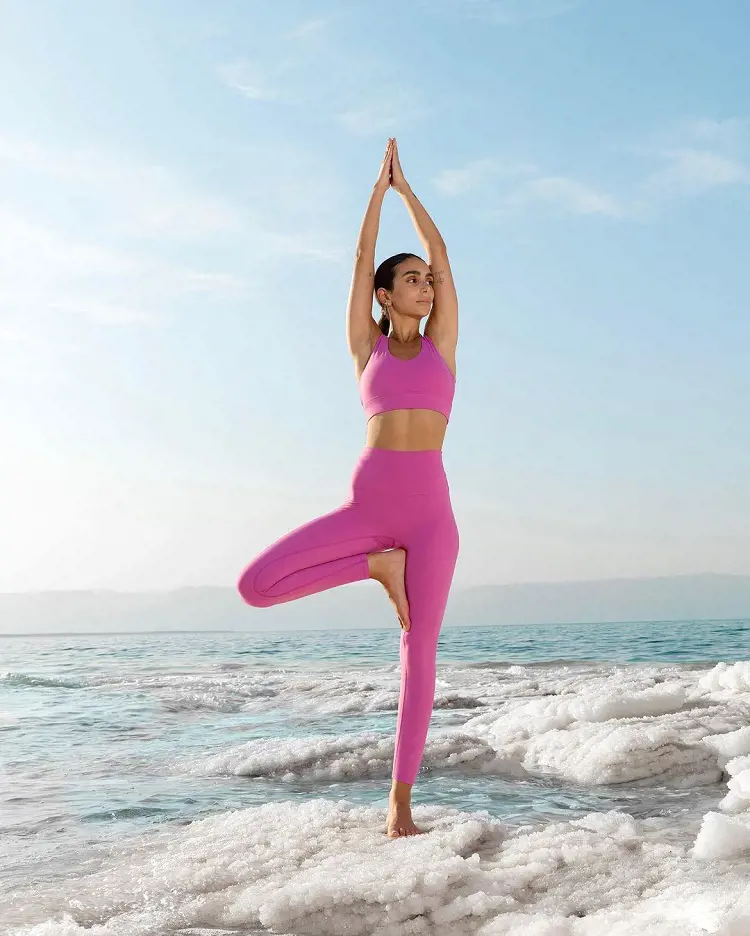
Tree Pose is a balancing yoga pose often associated with Hatha and Vinyasa yoga styles. While challenging, its simplicity makes it beginner-friendly. Modifications, like placing the foot on the calf or using a prop for support, accommodate various skill levels. This pose fosters mindfulness, grounding, and a sense of connection, making it accessible and beneficial for beginners.
How To Do
Stand on one leg and place the sole of the other foot on the inner thigh or calf. Bring palms together at your heart or extend arms overhead. Focus on a point for balance. Vrikshasana enhances balance, concentration, and stability while grounding the body and mind.
7. Seated Forward Bend (Paschimottanasana)
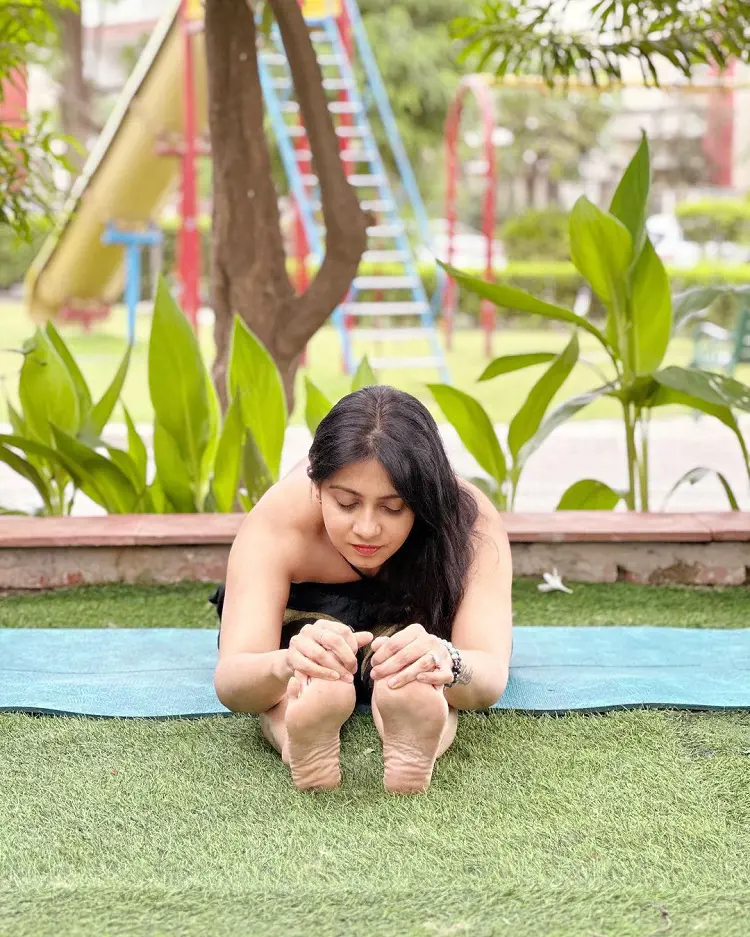
Seated Forward Bend is a yoga pose commonly found in Hatha and Yin yoga practices. In this seated stretch, practitioners hinge at the hips and reach toward their toes, lengthening the spine. Paschimottanasana promotes flexibility in the hamstrings and lower back while calming the mind.
How To Do
To practice Seated Forward Bend, sit with your legs extended. Inhale, lengthen the spine, and exhale, hinge at the hips to reach toward your toes. Keep the back straight, leading with the chest. Hold for a few breaths, feeling the stretch in the hamstrings. Relax and deepen the stretch gradually with each breath.
8. Cobra Pose (Bhujangasana)
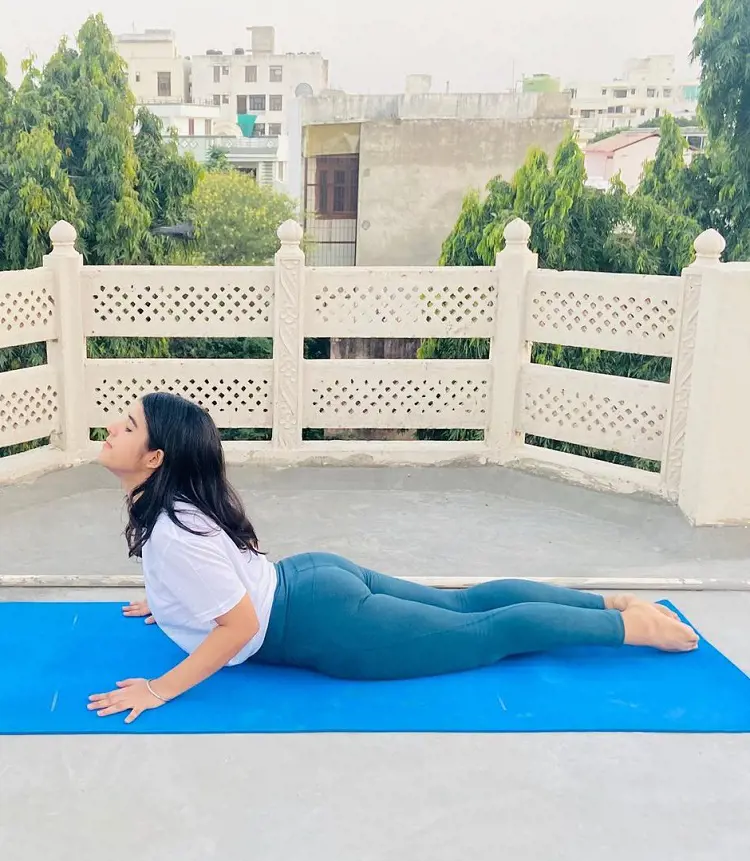
Cobra Pose is a back-bending yoga pose prevalent in Hatha, Vinyasa, and Ashtanga traditions. Bhujangasana strengthens the back muscles, opens the chest, and stimulates the abdominal organs, promoting both flexibility and a sense of invigoration. It is often part of sequences designed to enhance spinal health and energy flow.
How To Do
Lie on your stomach, palms beneath your shoulders. Inhale, lift your chest off the mat using your back muscles, keeping elbows slightly bent. Engage your legs and press the tops of your feet into the mat. Hold, exhale, and lower down. Focus on lengthening the spine and opening the chest.
9. Bridge Pose (Setu Bandhasana)

Bridge Pose is generally considered beginner-friendly. It is a gentle backbend that provides various benefits, including strengthening the back, glutes, and thighs, as well as stretching the chest and spine. However, as with any yoga pose, beginners need to approach it mindfully and listen to their bodies.
How To Do
First lie on your back, bend your knees, and place your feet hip-width apart. Inhale, press through your feet and lift your hips towards the sky. Clasp hands beneath your back, or keep your palms flat. Hold, engaging glutes and thighs. Exhale, lower down, and release.
10. Pigeon Pose (Eka Pada Rajakapotasana)
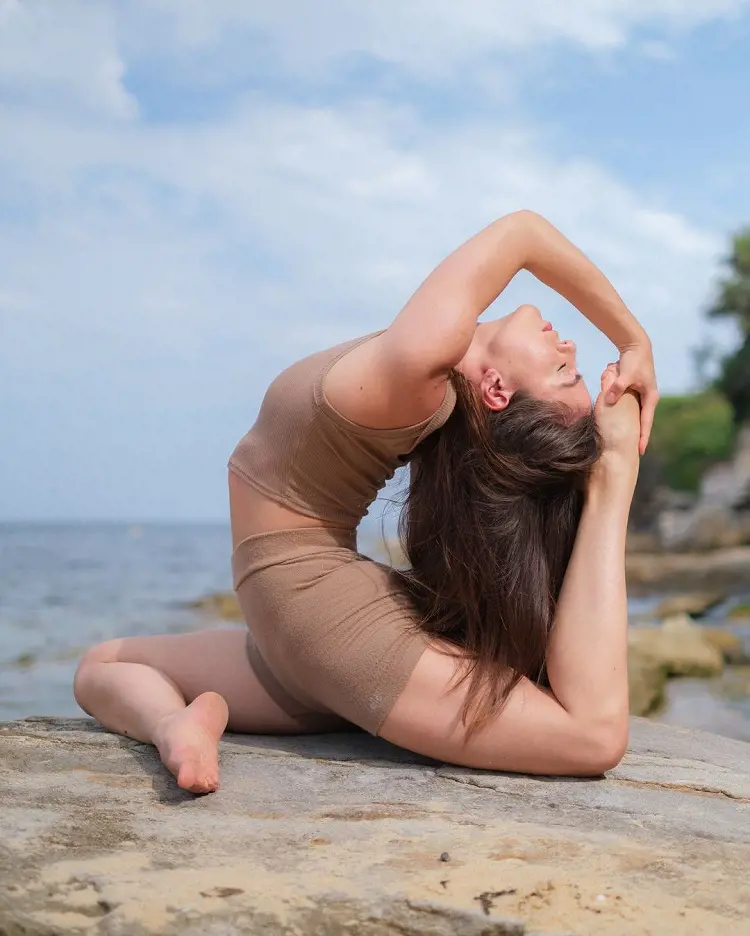
Pigeon Pose is a hip-opening yoga pose that involves bringing one knee forward and extending the opposite leg behind. This intense hip stretch targets the hip flexors and piriformis, promoting flexibility and mobility. Pigeon Pose also stimulates the abdominal organs and encourages a sense of surrender, making it a popular pose for releasing tension and emotions stored in the hips.
How To Do
Begin in a plank position. Bring one knee towards the wrist, extending the opposite leg behind. Lower the hips and chest, aligning the front shin parallel to the mat. Hold and breathe deeply, feeling a stretch in the hips. Repeat on the other side. This hip-opening pose enhances flexibility and releases tension
11. Cat-Cow Stretch (Marjaryasana-Bitilasana)
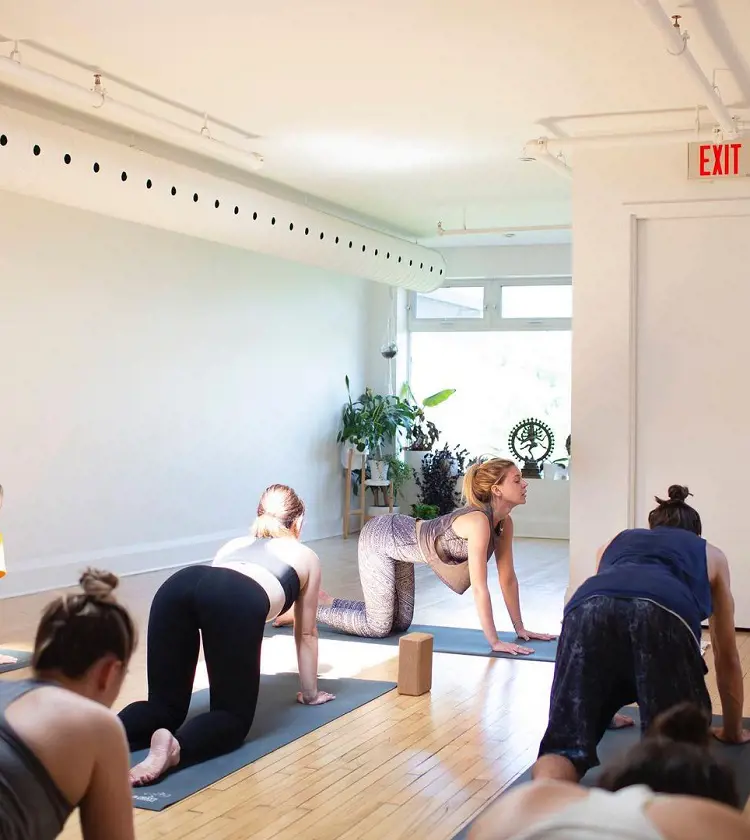
A dynamic and gentle yoga sequence that involves moving between two poses, Marjaryasana (Cat Pose) and Bitilasana (Cow Pose). The Cat-Cow Stretch is often used as a warm-up or part of a flow sequence to improve spinal flexibility, release tension in the back, and promote coordination between breath and movement. This yoga for lower back pain is suitable for practitioners of various levels, including beginners.
How To Do
To perform the Cat-Cow Stretch, start on hands and knees. Inhale, arch your back, lifting your head and tailbone. Exhale, around your spine, tucking your chin. Repeat, flowing between the two poses, syncing movement with breath. This dynamic sequence enhances spinal flexibility and releases tension.
12. Extended Side Angle Pose (Utthita Parsvakonasana)

Extended Side Angle Pose is a dynamic standing yoga pose. The pose engages the legs, opens the hips, and stretches the side body. Utthita Parsvakonasana builds strength, improves balance, and encourages a deep stretch in the groin and waist, making it a valuable addition to Hatha, Vinyasa, and Ashtanga yoga practices.
How To Do
Lie on your stomach. Place palms under your shoulders, inhale, and lift your chest while keeping your elbows slightly bent. Engage back muscles, press the tops of your feet into the mat, and look upward. Hold briefly, then exhale and lower back down. Focus on elongating the spine.
13. Legs Up the Wall Pose (Viparita Karani)

Legs Up the Wall Pose, also known as Viparita Karani, is a restorative yoga pose that is widely practiced in various yoga styles. This pose involves lying on the back with the legs extended upward against a wall. Viparita Karani is known for its calming and rejuvenating effects. It is accessible to practitioners of all levels and is often recommended for relaxation and restoration.
How To Do
Sit sideways next to a wall, then swing your legs up as you lie down. Position hips close to the wall, arms relaxed. This restorative pose promotes relaxation, improves circulation, and relieves tension. Stay in the pose for a few minutes, breathing deeply.
14. Garland Pose (Malasana)
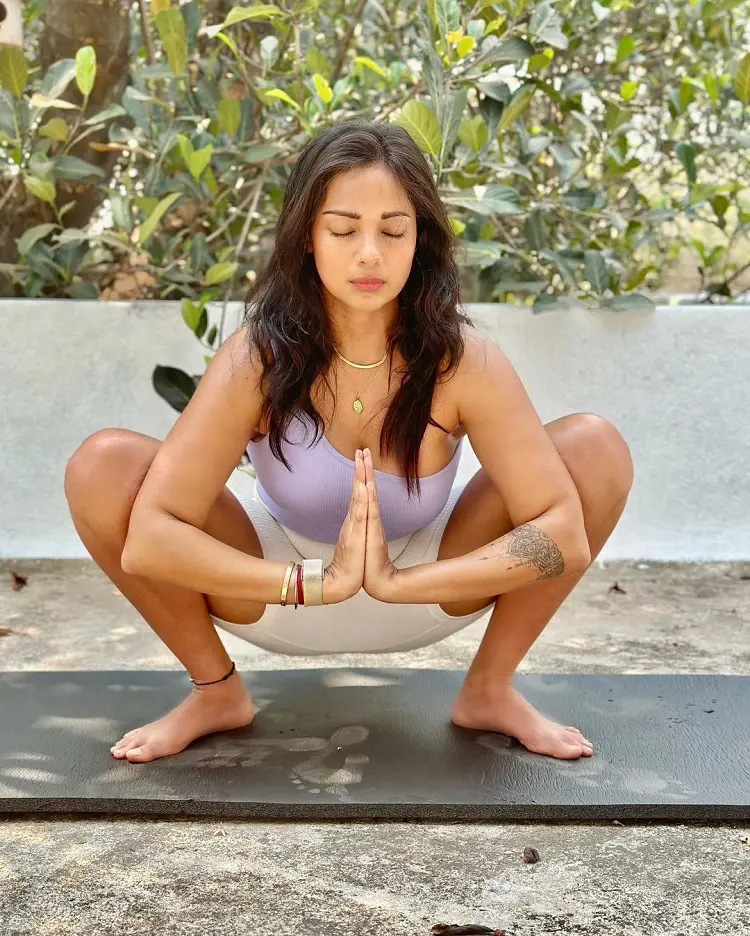
Garland Pose is a yoga pose that is commonly associated with Hatha and Vinyasa yoga styles. This pose involves squatting with the feet flat on the ground, knees bent, and hands in a prayer position at the heart center. Malasana is a grounding and hip-opening pose that stretches the lower back, hips, and groin.
How To Do
Start in a squat with feet flat. Bring palms together at your heart, using elbows to press knees apart. Keep the spine long and chest lifted. Engage the core and breathe deeply. This hip-opening pose improves flexibility and strengthens the lower body while promoting a grounded sense of stability.
15. Balancing Table Pose (Dandayamana Bharmanasana)
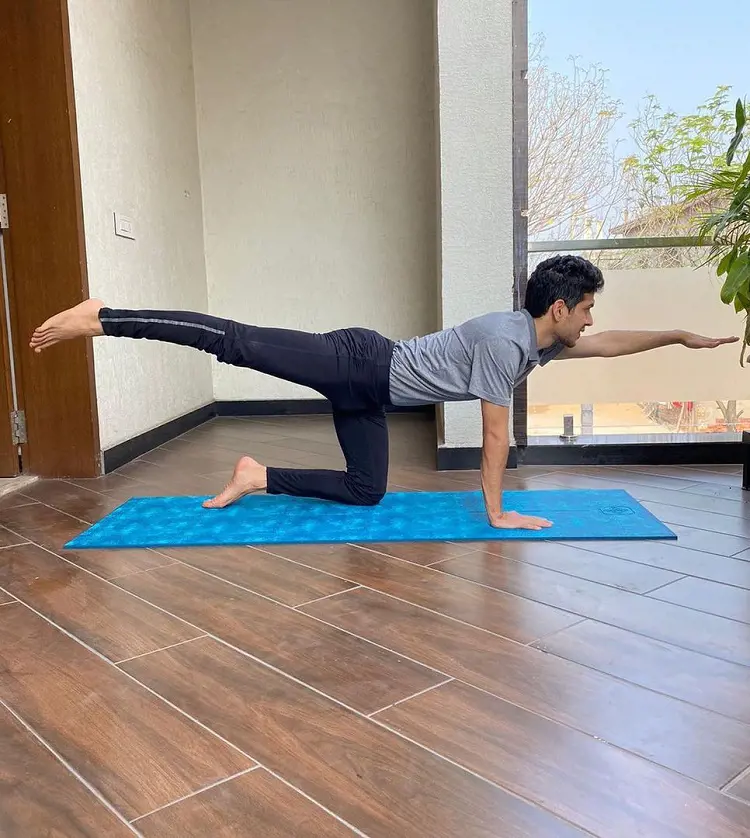
Balancing Table Pose is a dynamic yoga pose. Dandayamana Bharmanasana enhances core strength, stability, and concentration. It promotes balance between the limbs, engages the abdominal muscles, and strengthens the back. This pose is often incorporated into sequences to improve coordination, build focus, and cultivate mindfulness, making it accessible to practitioners of varying levels.
How To Do
This yoga is achieved by extending one arm and the opposite leg while on hands and knees. It strengthens the core, improves balance, and enhances concentration. This dynamic pose is accessible for all levels, fostering mindfulness and body awareness in yoga practice.
Recent posts
Yoga
Yoga
13 Breathing Techniques To Bring Calm And Relieve Anxiety
Practicing breathing techniques can be extremely helpful in soothing anxiety and bringing a sense of calm. They are easy to perform and provide a faster way to induce relaxation. However, with so many techniques out there, choosing the best ones can ...
Yoga
15 Health Benefits of Hot Yoga to Heat Up Your Fitness
Do you feel like you're stuck in a monotonous yoga routine? Ever wish for a yoga session that challenges your body to drip sweat? Imagine walking into a room filled with heat, where every move tests your strength, flexibility, and determination. If y...
Yoga
14 Awesome Yoga For Lower Back Pain
Lower back pain is a common complaint, impacting millions of people worldwide. It can result from various factors, including poor posture, muscle imbalances, and injuries. Fortunately, yoga offers a gentle and effective approach to alleviating pain a...
Yoga
15 Yoga Stretches You Can Do Everyday
People have been practicing yoga since ancient times, combining physical postures, breathing exercises, and meditation. These routines offer many benefits for both your physical and mental health. They include improved flexibility, strength, and bala...
Yoga
14 Types Of Yoga And Their Health Benefits
Yoga is an ancient practice that combines physical postures, breathing techniques, and meditation to improve overall health. It is performed on a mat and can be done at any time, with many people choosing mornings for a fresh start. The practice offe...
Yoga
17 Best Yoga Poses For A Couple
Yoga poses for two people can help you discover the power of shared connection through the ancient art of yoga. Whether you're looking to strengthen your relationship, build trust, or simply add an exciting twist to your practice, practicing yoga wit...
